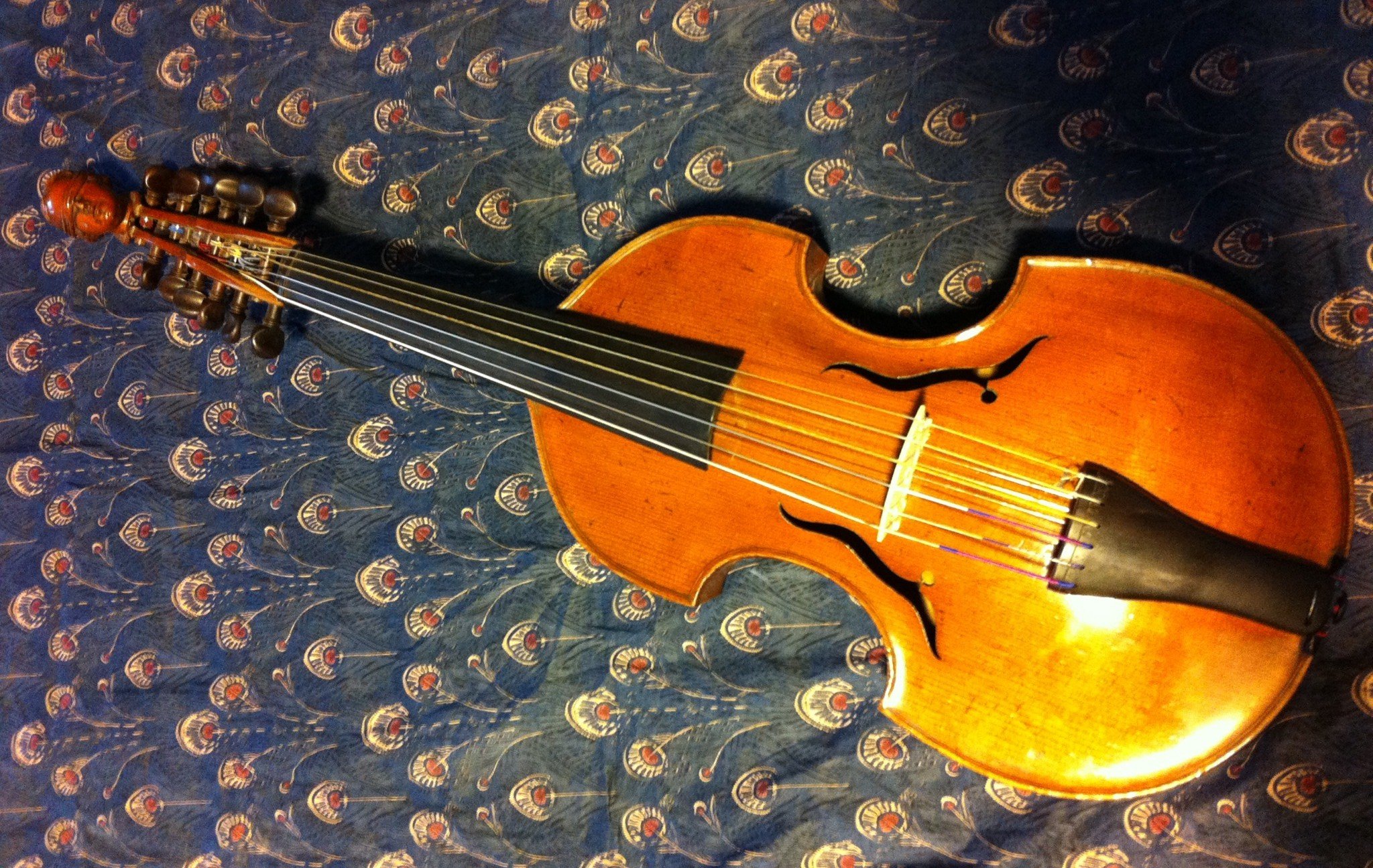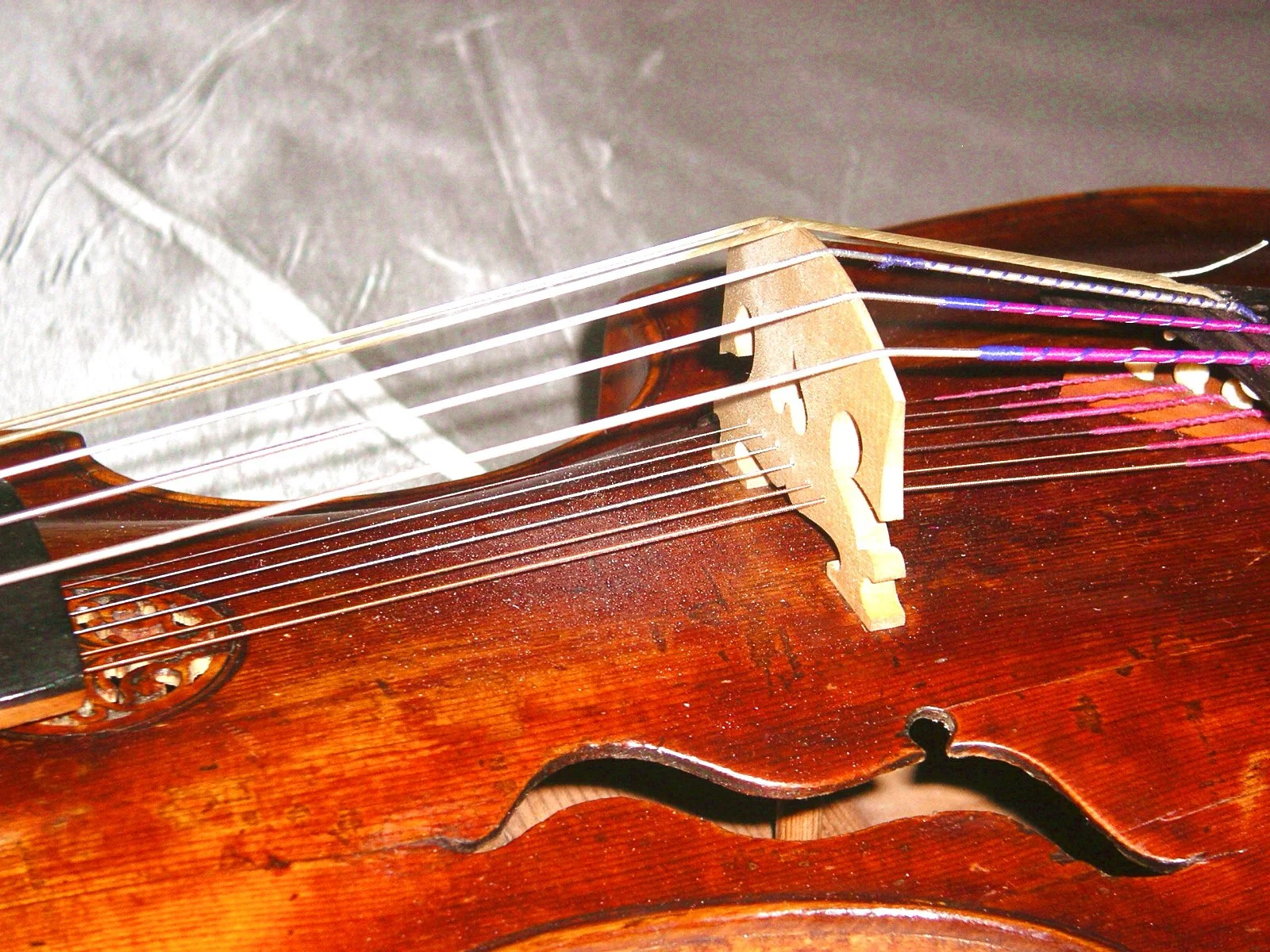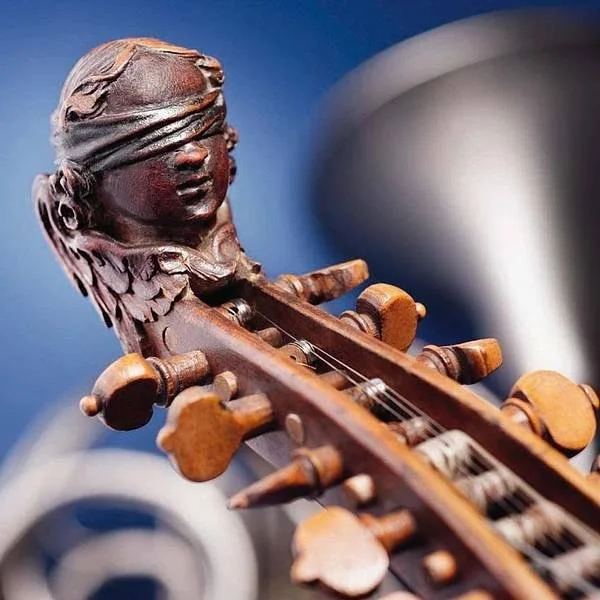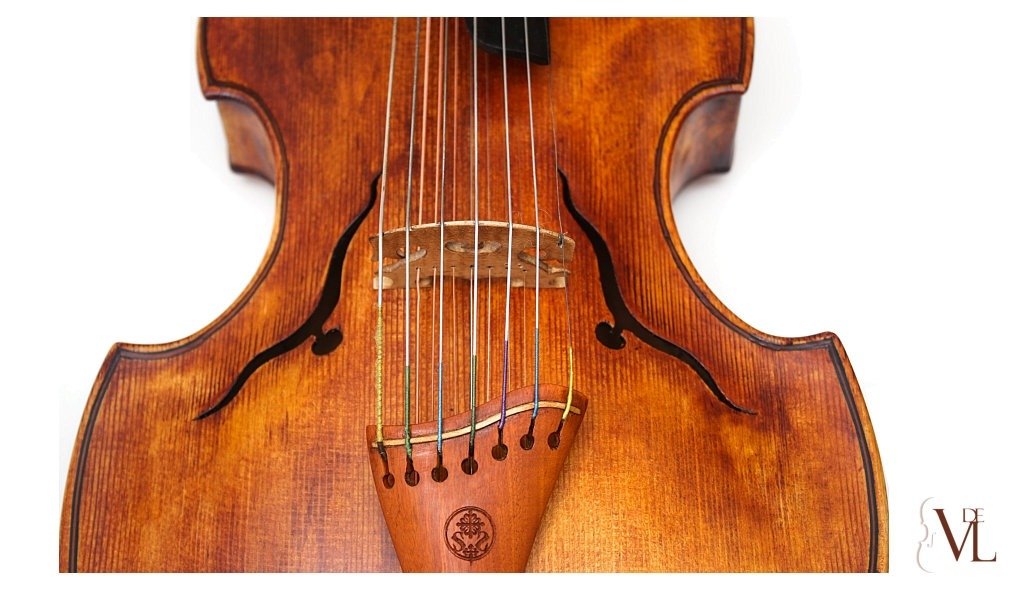It’s a particularly ornate member of the baroque-period viol family, distinguished by six or seven strings with matching sympathetic vibrating lower strings and an intricately carved head often featuring Cupid blindfolded to represent the travails of love. Played in a similar way to a violin, earlier models had six strings, but by around 1730, a seventh and the sympathetic strings began to appear, making for an extra resonance, and what Amadeus Mozart’s father, the composer and player Leopold, described as have a sweeter sound and “especially charming in the stillness of the evening”.
The viola d’amore’s sympathetic lower strings, which are not played, but add extra tone
Another key characteristic of the design are the more jagged, rapier-style sound-holes, generally known as a the flaming sword of Islam, harking back to possible Middle Eastern origins. With a wide range, the tunings would often vary according to the piece played, taken up by players who could also play the violin and viola. It was extensively written for by several composers, including several concertos by Antonio Vivaldi (1678–1741), Christoph Graupner (1683–1760), Georg Philipp Telemann (1681–1767) and of course Johan Sebastian Bach (1685–1750) who used it in in aria no.19 and 20 of the Johannes Passion and in Cantatas Nos. 36c, 152, and 205 Tritt auf die Glaubensbahn.
The blindfolded head of Cupid is a common theme on the instruments long, carved head
Composers continued to write for the instrument through the 19th century and later the 20th. Prominent pieces that feature the viola d’amore include Madama Butterfly (1904) by Giacomo Puccini and Romeo and Juliet (1936) by Sergei Prokofiev. Modern composers who have written several bespoke works include Hans Vermeersch, Rachel Stott, and Michael Edwards, who wrote a 2006 piece for viola d'amore and live electronics. The great film composer Bernard Herrmann's score for On Dangerous Ground (1951) makes extensive use of the viola d'amore for the female protagonist's theme.
Attilio Ariosti (1666–1729) was among the first notable players, but many string players included it in their repertoire, as specialists were rare. Vivaldi for example enjoyed it as an alternative to other instruments in the viol family.
The characteristic ‘sword of Islam’ sound-holes
As an overview, here’s contemporary player Pavlo Beznosiuk introducing the instruments as background to part of the Academy of Ancient Music's recording of J.S. Bach's St John Passion.
And here is a compilation of variety of solo music featuring the instrument:
So then, any more pieces featuring the viola d’amore to offer? Feel free to share any further ones from any form of music, or even film, art or other contexts in comments below.
You can also get in touch the contact page, and also visit us on social media: Song Bar Twitter, Song Bar Facebook. Song Bar YouTube. and Song Bar Instagram. Please subscribe, follow and share. New to comment? It is quick and easy. You just need to login to Disqus once. All is explained in About/FAQs ...
Song Bar is non-profit and is simply about sharing great music. We don’t do clickbait or advertisements. Please make any donation to help keep the Bar running:




